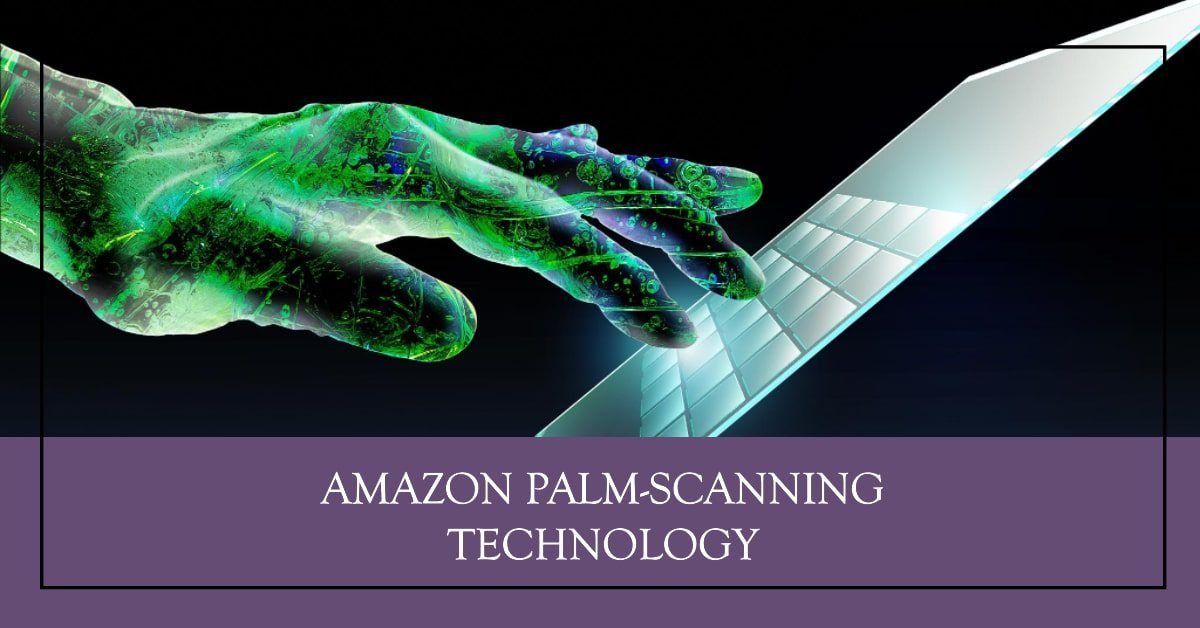Amazon, the e-commerce giant, has recently introduced a new biometric technology that allows customers to pay with their palms. The technology, called Amazon One, is designed to offer a fast, convenient, and contactless way to enter, identify, and pay at various locations. But how does Amazon Palm-Scanning Technology work, and what are the benefits and risks of using it? In this article, we will answer these questions and more, based on the information we found from reliable sources.
What is Amazon One and how does Amazon Palm-Scanning Technology work?
Amazon One is a service that uses palm recognition to identify customers and link them to their Amazon accounts or credit cards. Customers can enroll in the service by scanning their palm at an Amazon One device and inserting their payment card. Once enrolled, they can use their palm to pay at any store that has Amazon One, without the need for a card, phone, or wallet. They can also use their palm to enter venues, present loyalty cards, or verify their age.
Amazon One uses a combination of computer vision, artificial intelligence, and machine learning to create a unique palm signature for each customer. The palm signature is based on the lines, grooves, and ridges on the palm, as well as the network of veins under the skin. The palm signature is stored in a secure cloud and encrypted with a one-way hash, which means it cannot be reversed or decoded.
To use Amazon One, customers need to hover their palm over the device for about a second or so. The device uses infrared light to capture the palm image and compare it with the stored palm signature. If there is a match, the transaction is completed or the entry is granted. The process is fast, accurate, and intentional, meaning customers have to deliberately scan their palm for it to work.
What are the benefits of Amazon One?
Amazon Palm-Scanning Technology offers several benefits for customers and businesses alike. Some of the benefits are:
- Convenience: Amazon One allows customers to pay or enter with just their palm, which is easy and hassle-free. Customers do not have to carry or use any physical items, such as cards, phones, or cash, which can be lost, stolen, or forgotten. They can also save time by avoiding queues or waiting for verification.
- Security: Amazon One is highly secure and protects customer privacy and data. The palm signature is unique to each customer and cannot be replicated or impersonated. The palm signature is also stored in a secure cloud and encrypted with a one-way hash, which prevents unauthorized access or misuse. Customers can also delete their palm signature at any time through the Amazon One website or by contacting customer service.
- Innovation: Amazon One is an innovative technology that uses cutting-edge biometrics, optical engineering, generative AI, and machine learning. The technology is 100 times more accurate than scanning two irises and can recognize the palm regardless of gender, race, or skin tone. The technology also uses generative AI to create millions of synthetic palm images to train the AI model and improve its accuracy.
What are the risks of Amazon One?
Amazon One also has some potential risks or drawbacks that customers and businesses should be aware of. Some of the risks are:
- Privacy: Amazon One collects and stores biometric data from customers, which may raise some privacy concerns. Biometric data is sensitive and personal, and customers may not want to share it with a third-party company. Customers may also worry about how Amazon will use their palm data for advertising or tracking purposes, or how it will share it with other entities.
- Ethics: Amazon One may pose some ethical challenges or dilemmas for customers and businesses. For example, customers may feel pressured or coerced to enroll in the service to access certain services or benefits, or to avoid being left behind by the latest technology. Businesses may also face ethical issues such as discrimination, bias, or exclusion, if they rely solely on Amazon One and do not offer alternative options for customers who do not want to use it.
- Reliability: Amazon One may not be reliable or consistent in some situations or environments. For instance, the palm recognition may not work well if the customer’s palm is dirty, wet, injured, or covered by accessories, such as rings, gloves, or tattoos. The device may also malfunction or fail due to technical glitches, power outages, or cyberattacks.
Conclusion
Amazon One is a new biometric technology that allows customers to pay with their palms. The technology is fast, convenient, and contactless, and uses palm recognition to identify customers and link them to their Amazon accounts or credit cards. The technology also offers security, innovation, and convenience for customers and businesses. However, the technology also has some risks or drawbacks, such as privacy, ethics, and reliability, that customers and businesses should consider before using it. Amazon One is currently available in select Amazon and Whole Foods stores, as well as some third-party locations, such as travel retailers, sports and entertainment venues, convenience stores, and grocers. Customers can enroll in the service online or at any Amazon One location.

